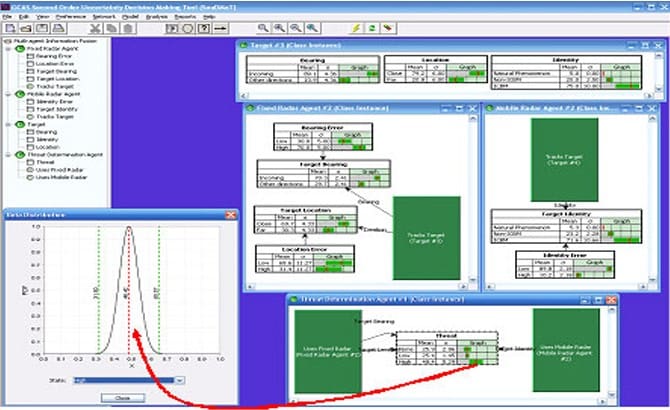Second Order Uncertainty (SOU)

Many tracking and target discrimination systems use Bayesian approaches to track objects and determine their identity as a critical part of the system. The Bayesian approaches use models that are characterized by a family of parameters. These parameters can be determined as best estimates from expertise, or as mean values derived from statistical analysis. In either case, current Bayesian approaches do not take into consideration the variability in the expert estimates nor the standard deviation of the statistics. When the correct parameters for the models are different from the selected ones, the outcomes for target tracking and discrimination can significantly change.
The traditional approach to estimating the variability in the inference output from variability in the model parameter and input data is to perform systematic numerical experiments using sampling techniques. However, this approach is slow and tedious.
GCAS has developed mathematics and software to obtain the distributions in real time, through an on-line technique that takes comparable time and memory as usual Bayesian inference. This technique is called Second Order Uncertainty (SOU) and can be used to:
- Enhance confidence in the inference results obtained in Bayesian Networks,
- Improve decision-making and establish robustness of a Coarse of Action,
- Determine the sensitivity of a model to its parameters and the evidence received, and
- Optimize collaboration of agents in multi-agent systems.
In addition, GCAS has developed a modeling and visualization tool that supports Bayesian Networks with Second Order Uncertainty. This modeling tool makes use of Probabilistic Relational Models, an object-oriented version of Bayesian Networks, to represent multi-agent systems.
